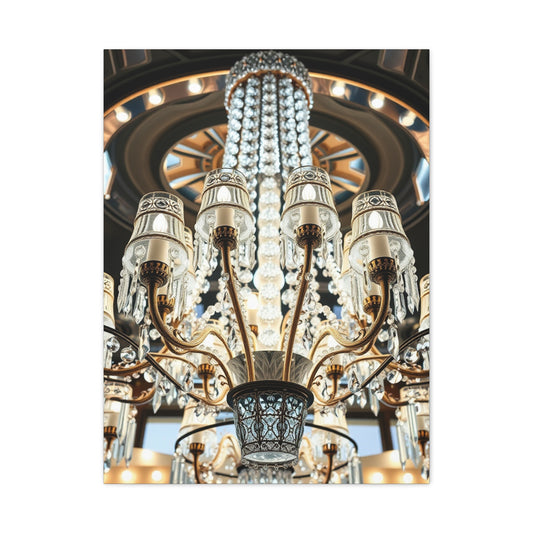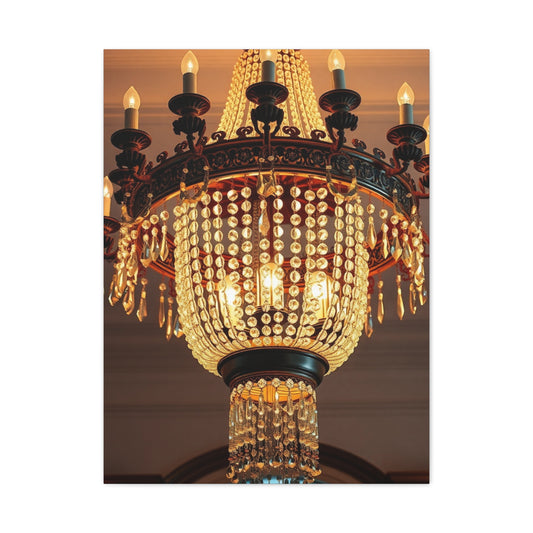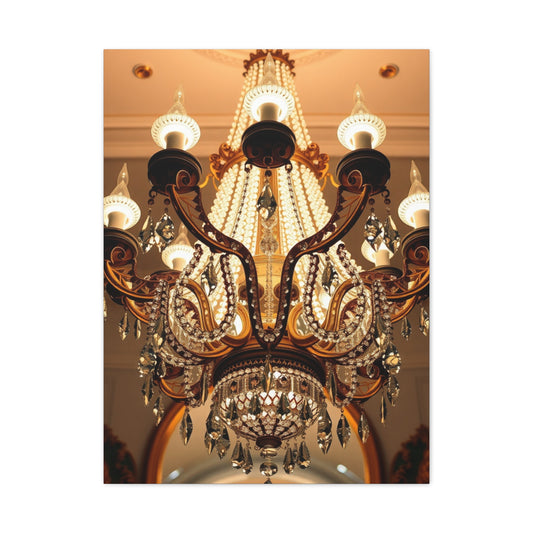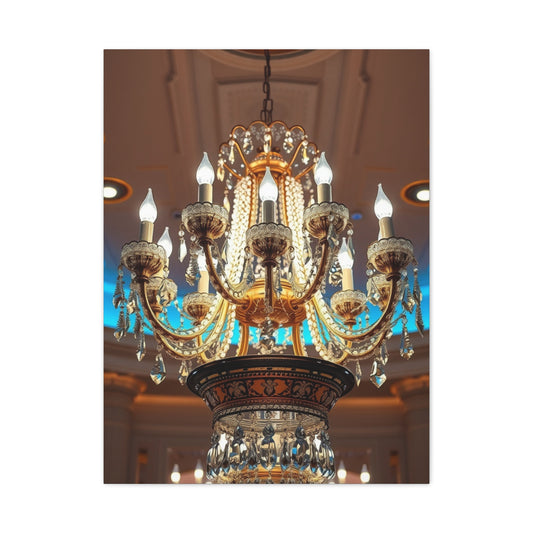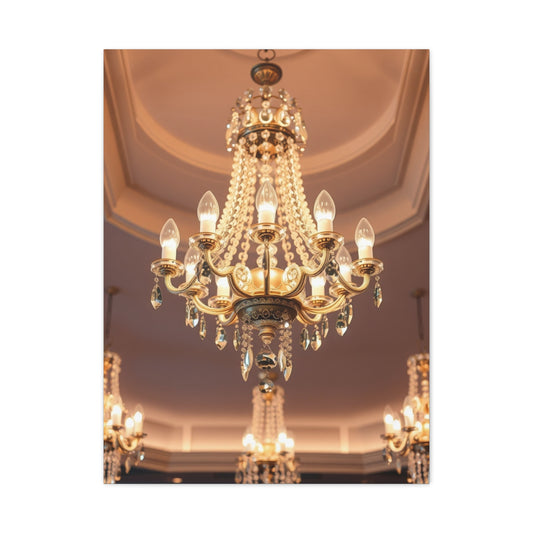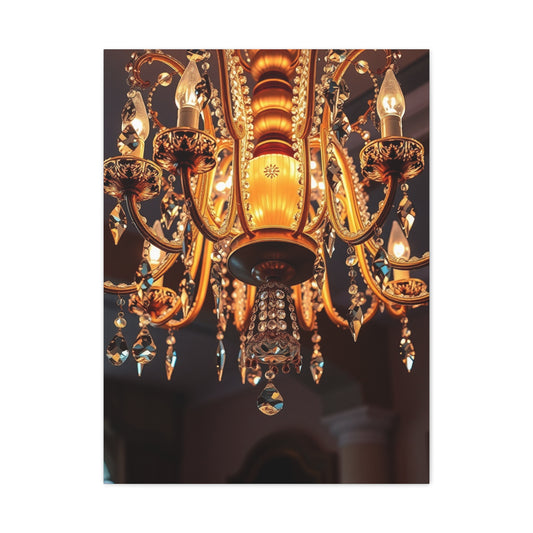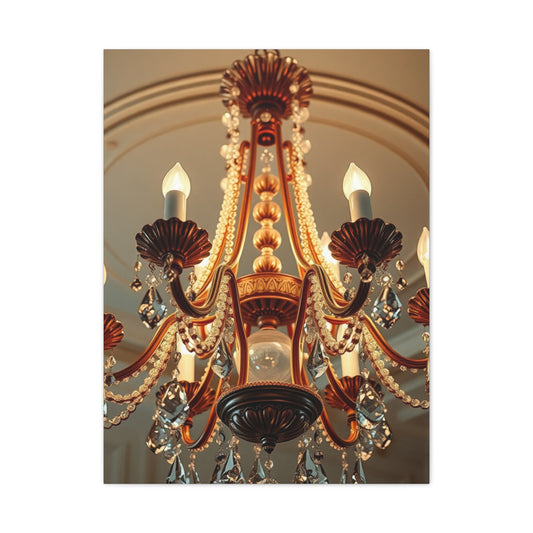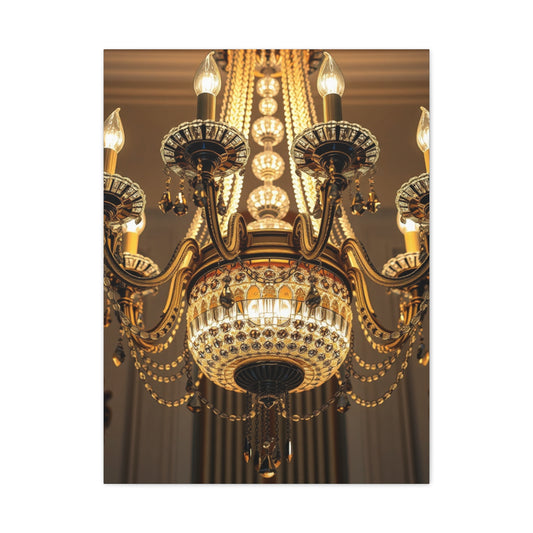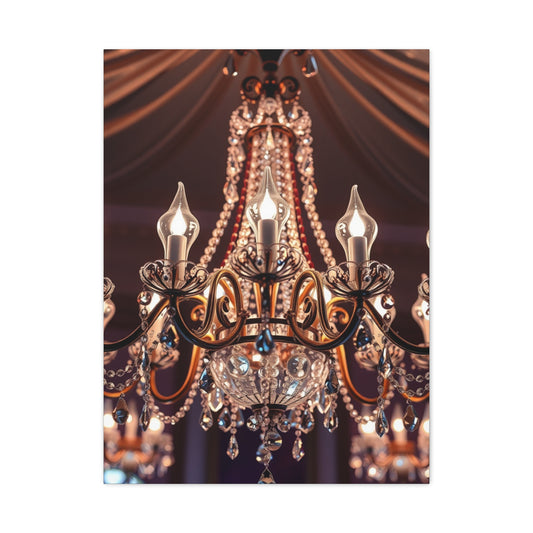-
Chandelier Art Supreme Canvas Wall Art & Canvas Print
Regular price From $141.23 USDRegular priceUnit price per -
Vision Chandelier Art Art Wall Art & Canvas Print
Regular price From $141.23 USDRegular priceUnit price per -
Elite Chandelier Art Vision Wall Art & Canvas Print
Regular price From $141.23 USDRegular priceUnit price per -
Chandelier Art Luxury Canvas Wall Art & Canvas Print
Regular price From $141.23 USDRegular priceUnit price per -
Collection Chandelier Art Art Wall Art & Canvas Print
Regular price From $141.23 USDRegular priceUnit price per -
Chandelier Art Refined Canvas Wall Art & Canvas Print
Regular price From $141.23 USDRegular priceUnit price per -
Supreme Chandelier Art Collection Wall Art & Canvas Print
Regular price From $141.23 USDRegular priceUnit price per -
Chandelier Art Supreme Gallery Wall Art & Canvas Print
Regular price From $141.23 USDRegular priceUnit price per -
Masterpiece Chandelier Art Vision Wall Art & Canvas Print
Regular price From $141.23 USDRegular priceUnit price per
Creating a Luxurious Dining Space Using Statement Chandeliers and Bold Wall Art
Transforming a casual dining area into a space that exudes elegance and personality requires more than just functional furniture and basic décor. Two design elements, in particular, have the power to redefine the atmosphere of your dining room: bold wall art and statement chandeliers. When thoughtfully integrated, these features do more than beautify—they set the tone for unforgettable dining experiences, spark conversation, and reflect your unique sense of style. This guide delves into the nuances of combining artistic expression with lighting design to create a sophisticated, inviting dining environment.
Lighting plays a pivotal role in shaping the mood of any room, and in the dining area, it becomes a central feature of both form and function. A statement chandelier serves as more than a source of illumination—it acts as a centerpiece that anchors the room’s design. When selecting a chandelier, consider its scale, style, and material relative to the size of your dining table and the overall dimensions of the space. Oversized crystal or glass chandeliers create a sense of grandeur and opulence, while contemporary metal or geometric designs can offer a bold, modern flair.
Placement is equally important. Position the chandelier directly above the center of the dining table, ensuring it hangs at an optimal height—typically 30 to 36 inches above the table surface for standard ceilings—to provide even lighting without obstructing views across the table. Dimmers are essential, allowing you to adjust brightness levels to create intimate, romantic settings or bright, energetic atmospheres for gatherings.
While a chandelier draws the eye upward, wall art captures attention at eye level, adding depth, character, and visual intrigue. Bold pieces—whether oversized canvases, abstract compositions, or vivid photographic prints—serve as conversation starters while tying together color schemes and thematic elements within the room. Consider the scale, color palette, and style of your artwork in relation to the room’s overall aesthetic. A large, colorful painting can provide a dynamic contrast to neutral furnishings, while a curated gallery wall with multiple pieces can introduce layers of texture and narrative.
The interplay between wall art and lighting is critical. Position your chandelier and supplementary wall sconces or accent lights to highlight artwork, creating a gallery-like effect that elevates the dining experience. Consider using layered lighting strategies, such as combining ambient overhead lighting with spotlights or picture lights, to bring depth and dimension to both the chandelier and the art.
Achieving balance between visual impact and practicality is essential. Both chandeliers and bold wall art should complement each other rather than compete for attention. Opt for cohesive color schemes, complementary textures, and proportional sizes to ensure that each element enhances the other. For instance, a sleek, modern chandelier pairs well with abstract or geometric wall pieces, whereas a traditional crystal chandelier is better complemented by classical or impressionist artwork.
Dining Room Design Balance
Designing a dining room that feels balanced and visually pleasing goes far beyond merely hanging a few pictures on the walls or installing an elegant chandelier. True visual harmony requires a deep understanding of proportion, spatial relationships, and the psychological effects that interior elements have on those who inhabit the space. In casual dining rooms, particular attention must be given to how wall art and lighting fixtures interact, as these components significantly influence the overall ambiance and the sense of cohesion within the room. The placement of art and chandeliers should consider both horizontal and vertical dynamics, the distribution of visual weight, and the natural pathways that guests follow when moving through the space.
Visual balance in dining room design operates on multiple layers. Primary balance involves larger structural or furniture elements, such as dining tables, chairs, and built-in cabinetry, which serve as the foundational anchors of the room. Secondary balance, on the other hand, focuses on decorative accents such as wall art, mirrors, light fixtures, and smaller accessories. Achieving harmony between these layers is often a challenge, particularly when structural limitations, such as immovable electrical outlets or pre-existing furniture layouts, restrict ideal placement. Designers must think creatively to ensure that the room maintains a sense of equilibrium despite these constraints.
The principle of visual weight is central to achieving a cohesive design. Elements with darker colors, bold textures, larger dimensions, or intricate patterns naturally draw the eye and carry more visual significance than lighter, simpler, or smaller objects. When arranging wall art in relation to a chandelier or pendant lighting, it is crucial to consider how the combined visual impact will be perceived. The goal is to make the arrangement feel deliberate, rather than random, creating a sense of intentionality and refinement.
Professional designers often employ clever optical strategies to enhance the perception of balance. For example, even when architectural limitations prevent perfect physical alignment, strategic positioning can create the illusion of symmetry and proportionality. Techniques such as offsetting artwork slightly or layering smaller pieces around a central fixture can trick the eye into perceiving a harmonious composition. Additionally, integrating elements like accent lighting, textured walls, or complementary color palettes can further unify the design, making the dining room feel thoughtfully curated and inviting.
Ultimately, achieving balance in a dining space is a careful orchestration of scale, color, texture, and placement. By understanding the psychological impact of visual weight and mastering the interplay between structural and decorative elements, homeowners and designers alike can craft dining environments that are not only functional but also aesthetically captivating, creating spaces where meals feel both comfortable and memorable.
Analyzing Spatial Relationships Between Furniture and Fixed Elements
The relationship between dining tables, wall-mounted artwork, and overhead lighting fixtures forms the cornerstone of successful casual dining room design. When working with extended dining tables, particularly those measuring seventy-two inches or longer, the challenge of achieving visual harmony becomes significantly more complex. These substantial pieces of furniture create strong horizontal lines that must be balanced against vertical elements without overwhelming the space or creating uncomfortable viewing angles.
Long dining tables present unique opportunities and challenges in terms of artwork positioning. The extended horizontal surface creates a natural gallery wall opportunity, but the proportions must be carefully calculated to avoid creating a tunnel effect or making the artwork appear diminutive in comparison. The key lies in understanding the sight lines from various entry points and ensuring that the artistic display enhances rather than competes with the table's prominence.
When electrical outlets or junction boxes cannot be relocated to achieve perfect centering above dining tables, alternative strategies become necessary. Professional designers often recommend embracing asymmetrical arrangements that create intentional visual interest rather than attempting to force symmetrical solutions that appear awkward or unbalanced. This approach requires careful consideration of counterbalancing elements throughout the room to maintain overall harmony.
The psychology of dining room arrangement significantly impacts how occupants and guests perceive the space. Research indicates that properly positioned artwork and lighting contribute to longer, more comfortable dining experiences by creating visual focal points that encourage conversation and relaxation. Conversely, poorly aligned elements can create subconscious tension that detracts from the dining experience, even when occupants cannot articulate the specific source of their discomfort.
Strategic Approaches to Chandelier Positioning and Installation
Chandelier placement represents one of the most critical decisions in dining room design, as it affects both functional illumination and aesthetic appeal. Traditional design principles suggest centering the fixture above the dining table, but practical constraints often necessitate creative solutions that maintain visual impact while accommodating structural limitations. Understanding the various mounting options and their implications becomes essential for achieving optimal results.
The installation of adjustable mounting systems provides flexibility for future rearrangements while ensuring proper lighting distribution. Ceiling hooks designed for chandelier repositioning offer practical solutions when electrical boxes cannot be moved, allowing homeowners to achieve better alignment with their dining furniture. These systems require careful structural assessment to ensure adequate weight support and proper electrical connections.
When selecting replacement chandeliers, consideration must be given to scale, style, and finish compatibility with existing design elements. Brushed nickel finishes offer versatility and durability while complementing contemporary cabinet hardware and modern appliances. The size relationship between the chandelier and dining table follows established proportional guidelines, but these can be adjusted based on ceiling height, room dimensions, and personal preferences.
The height at which chandeliers are suspended significantly impacts both functionality and aesthetics. Standard recommendations suggest thirty to thirty-six inches above the table surface for eight-foot ceilings, with adjustments made for higher ceilings. However, these guidelines must be balanced against the visual relationship with wall-mounted artwork to ensure cohesive design integration.
Comprehensive Wall Art Placement Strategies for Maximum Impact
Wall art positioning in dining rooms requires careful consideration of viewing angles, furniture relationships, and overall room proportions. The placement of canvas artwork becomes particularly complex when dealing with long dining tables that cannot be centered beneath overhead lighting. Strategic positioning must account for primary viewing angles while creating visual interest from secondary vantage points.
The concept of grouping multiple artworks creates opportunities for enhanced visual impact and improved proportional relationships. Two canvas pieces can be arranged in various configurations, each offering different aesthetic outcomes and spatial relationships. Horizontal arrangements emphasize the length of dining tables, while vertical stacking can add height and drama to wall displays.
Centering artwork along wall surfaces provides traditional symmetry but may not always create the most visually pleasing relationship with off-center furniture arrangements. Alternative positioning strategies include aligning artwork with specific furniture elements, creating intentional asymmetrical arrangements, or using the artwork to visually balance other room elements. Each approach requires careful consideration of sight lines and visual weight distribution.
The scale of wall art relative to dining room proportions significantly impacts the overall design success. Artwork that appears too small for the space can create a sense of incompleteness, while oversized pieces may overwhelm other design elements. Professional designers often recommend artwork that spans approximately two-thirds to three-quarters of the furniture width it relates to, though this guideline can be adjusted based on specific room characteristics and personal preferences.
Floating Frames: Modern Elegance and Subtle Enhancement
Canvas artwork presents a distinctive opportunity to elevate interior design in ways that differ from traditional framed prints or photographs. Unlike standard wall art, canvases inherently convey texture, depth, and a sense of dimensionality that can transform a space. While canvases can stand alone as striking visual statements, the addition of framing or unique presentation techniques can significantly enhance their presence, harmonize them with the surrounding decor, and elevate the overall aesthetic of a room. Understanding the various framing options and presentation methods is essential for anyone looking to showcase their canvas art to its fullest potential.
One of the most popular contemporary approaches to framing canvas artwork is the floating frame. Floating frames encase the artwork without touching the canvas surface, creating a slight gap between the edge of the canvas and the frame itself. This technique gives the impression that the artwork is “floating” within the frame, adding depth while preserving a minimalist, modern appeal. The subtle border created by floating frames can make a piece appear larger and more prominent without overpowering the artwork’s intrinsic qualities.
The choice of frame material and finish plays a critical role in achieving the desired effect. Natural wood floating frames can introduce warmth and organic texture, complementing earthy interiors. Metal frames, such as brushed nickel or matte black, lend a sleek, industrial sophistication ideal for contemporary or urban spaces. Painted frames offer versatility, allowing for a bold accent or a harmonious match with existing room colors. Selecting a frame that resonates with the room’s broader design elements ensures cohesion and visual harmony.
For those seeking a more substantial and classic look, traditional picture frames offer a timeless method to accentuate canvas art. Unlike floating frames, traditional frames make direct contact with the edges of the canvas, providing greater visual weight and presence. The width, profile, and finish of the frame are crucial considerations, as these factors dramatically influence the overall impact of the artwork.
Wider frames command attention and can transform a modest canvas into a commanding focal point, perfect for spacious walls and formal dining or living areas. Narrower frames, by contrast, provide a delicate enhancement suitable for smaller canvases or rooms where space is limited. Finishes—from ornate gilded edges to smooth lacquered surfaces—allow for customization according to the room’s style, whether classic, modern, or eclectic. Careful selection ensures that the frame enhances the artwork without overshadowing its visual narrative.
Beyond conventional framing, a variety of alternative presentation techniques can elevate canvas artwork and make it a more dynamic element of interior design. Shadow boxes add dimensional depth and intrigue, allowing space between the canvas and the backing, which emphasizes texture and color contrast. Specialized gallery lighting, including track lights or adjustable spotlights, draws attention to the artwork while creating dramatic highlights and shadows that accentuate detail. Textural mounting surfaces, such as reclaimed wood panels or metallic backdrops, can provide a unique backdrop that enhances the visual impact of the canvas and integrates it seamlessly into the room’s design narrative.
Each of these methods offers distinct benefits and challenges. Shadow boxes require precise measurements to avoid an unbalanced appearance, while gallery lighting demands careful placement to prevent glare or uneven illumination. Textural mounting surfaces must complement rather than clash with existing décor. The goal is to select a method that emphasizes the inherent qualities of the artwork—its colors, textures, and dimensions—while improving its relationship with surrounding design elements.
Color Coordination and Finish Selection for Cohesive Design Integration
The selection of chandelier finishes must harmonize with existing design elements while Selecting the right finishes and colors for dining room elements, especially chandeliers and wall art, is critical to achieving a cohesive and polished interior design. Every detail, from the metallic sheen of a light fixture to the tones in a painting, contributes to the overall visual harmony of the space. When these elements are thoughtfully coordinated, they create a sense of unity that elevates both the aesthetic and functional experience of the dining room.
One of the first considerations in finish selection is the chandelier. The finish must complement not only the existing design elements but also the style and color palette of the chosen wall art. For instance, brushed nickel finishes offer remarkable versatility, harmonizing seamlessly with contemporary cabinet hardware, stainless steel appliances, and a wide range of artwork frames. Beyond their practical appeal, these finishes provide longevity, resist tarnishing, and exude a subtle sophistication that blends effortlessly into both modern and transitional interiors. By choosing finishes that align with the broader room palette, designers ensure that lighting fixtures enhance the space without dominating or clashing with other décor elements.
Equally important is the relationship between color in the artwork and surrounding room features. Color coordination creates a visual rhythm that guides the eye naturally across the dining area. The tones present in wall art should be reflected or complemented by other design components such as chandelier finishes, table linens, rugs, and decorative accessories. For example, a painting featuring warm amber hues can be paired with a chandelier in a soft gold or bronze finish and complemented by matching tableware or placemats, producing an intentional, cohesive look. Such thoughtful color echoes foster sophistication, making the design feel deliberate rather than coincidental or haphazard.
The psychological impact of color within dining environments is another essential consideration. Warm colors like deep reds, burnt oranges, or rich yellows tend to create inviting, intimate atmospheres that encourage extended conversation and relaxed social interactions. Cooler tones such as blues, greens, or silvers evoke a more energizing or formal mood, shaping the perception of space and influencing dining behavior. By carefully considering the interplay between wall art colors and chandelier finishes, designers can manipulate the room’s overall color temperature to achieve the desired ambiance, whether cozy and relaxed or elegant and formal.
Metallic finishes in fixtures and furniture hardware also play a crucial role in establishing visual consistency. While mixing metals can introduce interest and dynamic contrast, it must be done thoughtfully to avoid visual chaos. Brushed nickel, for example, pairs exceptionally well with chrome, stainless steel, and select brass finishes, offering flexibility for future updates without disrupting the room’s cohesion. Intentional layering of metals, whether through lighting, decorative hardware, or accessories, adds depth while maintaining a balanced aesthetic.
Ultimately, cohesive design integration in dining rooms relies on a comprehensive understanding of both color theory and material finishes. Every element—from the tones in a piece of wall art to the gleam of a chandelier—interacts to influence the room’s visual flow and emotional atmosphere. By selecting complementary colors, coordinating metallic finishes, and aligning all elements with the intended mood, designers and homeowners can create dining spaces that feel thoughtfully composed, visually harmonious, and welcoming. Such spaces not only look beautiful but also enhance the overall dining experience, leaving a lasting impression on both residents and guests alike.
Lighting Design Principles for Enhanced Artwork Visibility
Effectively illuminating wall art requires a thoughtful approach that balances aesthetic appeal, practical visibility, and preservation concerns. Lighting does more than simply brighten a room—it shapes perception, highlights textures, and brings out the true colors of artwork. In a dining environment, the placement and type of lighting become even more critical, as chandeliers and supplementary fixtures must harmonize with the room’s overall ambiance while enhancing the visual impact of wall-mounted pieces. This guide explores key principles for designing lighting systems that maximize artwork visibility and elevate the overall dining experience.
A chandelier is often the centerpiece of a dining room, providing both functional and decorative lighting. However, its placement affects more than just general illumination—it influences how light falls across walls, surfaces, and artwork. Correct positioning ensures that paintings or canvas pieces receive sufficient light to be appreciated without producing harsh shadows or unwanted glare. When selecting a chandelier, consider its height, width, and the distribution of light. Chandeliers with adjustable arms or dimmable features offer flexibility, allowing you to fine-tune brightness and focus depending on the time of day or dining activity.
While ambient lighting provides general illumination, it often falls short in highlighting specific artwork. To overcome this, supplementary lighting can be introduced without necessitating extensive electrical work. Picture lights, track lighting, or strategically placed table and floor lamps can direct focused illumination onto wall art, enhancing visibility and accentuating details. These secondary light sources should complement the chandelier rather than compete with it. Proper layering of light—ambient, task, and accent—creates a dynamic environment where the room is well-lit overall, yet individual art pieces are given prominence and attention.
Lighting color temperature plays a critical role in how artwork is perceived. Warm light, which typically ranges from 2700K to 3000K, accentuates reds, oranges, and yellows, creating a cozy, inviting atmosphere. However, this warmth may slightly mute blues and greens, potentially altering the original intent of the piece. Conversely, cool light, around 4000K to 5000K, enhances blues and greens but can make warmer tones appear less vibrant. Understanding these interactions allows for thoughtful selection of bulbs and fixtures that faithfully represent the artwork while maintaining the desired mood for dining and social interaction.
Natural light is a powerful tool in any room but requires careful management when artwork is involved. Sunlight can beautifully illuminate colors and textures, but prolonged exposure to ultraviolet rays can damage paintings and canvas over time, causing fading or deterioration. To protect artwork while benefiting from daylight, consider window treatments such as sheer curtains, blinds, or UV-protective films. Placement of art in areas that receive indirect sunlight or rotating pieces periodically can also help preserve their integrity. Combining natural light with artificial sources allows for consistent, balanced illumination that highlights the artwork at all times.
Achieving the ideal lighting for artwork in a dining room involves a combination of strategic placement, thoughtful fixture selection, and careful management of natural light. Properly illuminated wall art not only enhances the aesthetic appeal of the room but also transforms the dining experience, inviting guests to engage with the space on a sensory level. Layered lighting ensures each artwork is visible from multiple angles, while attention to color temperature maintains the vibrancy of every hue. Ultimately, a well-designed lighting scheme elevates both the artwork and the ambiance, creating a cohesive and luxurious environment that merges visual beauty with functional practicality.
By understanding the interplay between chandeliers, supplemental fixtures, color temperature, and natural light, homeowners can craft dining spaces where artwork takes center stage, complementing the room’s design and enhancing every mealtime gathering. Thoughtful lighting is not merely functional—it is a tool for artistry, perception, and long-lasting visual enjoyment.
Proportional Guidelines for Furniture and Decoration Relationships
Creating a dining room that feels balanced and visually harmonious requires careful attention to the proportional relationships between furniture, wall art, and lighting fixtures. While certain design principles offer standard guidelines, they are not rigid rules; rather, they serve as flexible starting points that can be adapted to suit specific room dimensions, ceiling heights, and individual aesthetic preferences. By understanding these proportional relationships, designers and homeowners alike can make informed decisions that preserve the integrity and elegance of the overall space.
One of the primary considerations in proportional design is the relationship between the dining table and the artwork above or near it. Table length significantly influences the size and arrangement of wall art. For example, a standard seventy-two-inch dining table demands larger art pieces or a carefully curated grouping of smaller works to maintain a sense of scale. A single small painting or print placed above such a substantial table can feel visually lost or disconnected, undermining the cohesion of the room. In contrast, artwork that is scaled appropriately to the table’s dimensions enhances visual balance, creating a focal point that draws the eye and enriches the dining experience. Designers often use groupings of art in symmetrical or asymmetrical arrangements to ensure the proportional weight complements the furniture without overwhelming it.
Lighting fixtures, particularly chandeliers, also follow well-established proportional guidelines. The diameter of a chandelier is typically recommended to measure between one-half and two-thirds the width of the dining table. For example, a forty-eight-inch table would pair well with a chandelier measuring between twenty-four and thirty-two inches in diameter. Ceiling height and overall room size further influence these calculations, as taller ceilings or larger spaces may allow for slightly larger fixtures, while lower ceilings require more modestly sized lighting to maintain visual comfort. These proportional considerations not only ensure adequate illumination across the table surface but also maintain scale harmony with surrounding furniture, artwork, and architectural features.
Effective wall space utilization is another crucial aspect of proportional design. Artwork should be carefully positioned to avoid overcrowding while maintaining sufficient visual impact. Designers often recommend leaving a buffer of eight to twelve inches between the bottom edge of artwork and the top of furniture, such as sideboards, cabinets, or the dining table itself. This spacing creates breathing room that allows each element to be appreciated individually while contributing to the overall cohesion of the design. Adjustments may be necessary depending on the dimensions, framing, and style of the artwork, as well as the proportions of the room itself.
Understanding these proportional principles enables homeowners and designers to make thoughtful modifications that respect both aesthetic and functional considerations. By carefully calibrating the size, placement, and spacing of tables, lighting fixtures, and artwork, a dining room can achieve an elegant balance that feels deliberate rather than accidental. This harmony enhances not only the visual appeal of the space but also the overall dining experience, fostering environments that are welcoming, comfortable, and visually satisfying.
Incorporating proportional guidelines into the design process encourages a holistic approach, where every element is considered in relation to the others. From the width of a dining table to the diameter of a chandelier and the scale of the wall art, every decision contributes to a cohesive, well-balanced environment. By adhering to these principles and adapting them thoughtfully, a dining room can seamlessly blend functionality, aesthetic appeal, and spatial harmony, resulting in a space that is both inviting and visually captivating.
Creative Solutions for Challenging Spatial Constraints
When ideal positioning proves impossible due to structural constraints, creative design solutions can achieve excellent results through alternative approaches. Embracing asymmetrical arrangements often produces more dynamic and interesting spaces than forced symmetrical solutions that appear awkward or unnatural. The key lies in creating intentional balance through strategic placement of counterbalancing elements.
Grouping multiple artwork pieces provides opportunities to create substantial visual impact while maintaining flexibility in positioning. Asymmetrical groupings can work beautifully with off-center lighting fixtures, creating intentional design moments that appear sophisticated rather than accidental. The spacing between grouped pieces requires careful consideration to maintain unity while allowing individual pieces to shine.
Architectural features can be incorporated into design solutions to create visual anchors for artwork and lighting arrangements. Columns, beams, built-in furniture, and other structural elements can provide reference points for positioning decisions that work with rather than against existing constraints. These features often suggest natural grouping opportunities or alignment possibilities that create elegant solutions.
Alternative lighting strategies can complement or supplement primary chandelier illumination when positioning constraints limit optimal placement. Pendant lights, sconces, or portable lighting can provide focused illumination for artwork while reducing dependence on central fixtures for all lighting needs. These additions should be coordinated stylistically and functionally with primary lighting elements.
Material Selection and Quality Considerations for Long-term Satisfaction
The selection of durable, high-quality materials for both lighting fixtures and artwork presentation ensures long-term satisfaction and reduces maintenance requirements. Chandelier construction quality significantly impacts both appearance and functionality over time. Investment in well-constructed fixtures pays dividends through reliable operation and enduring aesthetic appeal.
Artwork preservation requires consideration of environmental factors including humidity, temperature fluctuations, and light exposure. Canvas pieces require appropriate mounting and positioning to prevent damage while maintaining optimal viewing conditions. Understanding these requirements helps inform placement decisions and supplementary protection measures.
Frame selection involves balancing aesthetic considerations with practical durability requirements. High-quality framing materials and construction techniques ensure long-term artwork protection while maintaining appearance. The investment in professional framing often proves worthwhile through enhanced artwork presentation and protection.
Finish durability varies significantly among different chandelier options, with some requiring more frequent maintenance or showing wear more readily. Brushed nickel finishes typically offer excellent durability and resistance to fingerprints, water spots, and general wear. Understanding maintenance requirements helps inform selection decisions and long-term satisfaction.
Integration with Kitchen Remodeling Plans and Future Design Updates
Dining room design decisions must consider planned kitchen renovations to ensure cohesive design flow between connected spaces. Hardware finishes, color palettes, and stylistic elements should be coordinated between rooms while allowing each space to maintain its distinct character. Advanced planning prevents costly revisions and ensures harmonious integration.
Timeline considerations for remodeling projects affect the order of design decisions and installations. Electrical work for chandelier repositioning may be more economically completed during kitchen renovation when contractors are already present and walls may be opened for other improvements. Strategic coordination can reduce overall project costs and disruption.
Future flexibility should be incorporated into current design decisions to accommodate changing needs and preferences. Selecting neutral finishes and classic proportions provides longevity while allowing for periodic updates through accessories, artwork, and smaller elements. This approach maintains design freshness without requiring major overhauls.
Budget allocation between current improvements and future renovation plans requires careful consideration of priorities and long-term goals. Sometimes phased improvements prove more economical and allow for better decision-making as design preferences evolve. Understanding the relationship between current investments and future plans helps optimize resource allocation.
Advanced Design Techniques for Professional-Quality Results
Layered lighting design incorporates multiple light sources to create sophisticated illumination that serves various functions throughout the day and evening. Primary chandelier lighting provides general illumination, while accent lighting highlights artwork and creates ambient mood. Understanding how these layers interact produces professional-quality results.
Visual anchoring techniques help establish focal points and guide eye movement through dining spaces. Properly positioned artwork and lighting fixtures create natural focal points that organize visual attention and create comfortable, welcoming environments. These techniques require understanding of human psychology and visual perception principles.
Scale manipulation through strategic design choices can alter the perceived proportions of dining rooms and their contents. Large artwork can make rooms appear larger, while smaller pieces may create more intimate feelings. Understanding these effects enables intentional atmosphere creation through design decisions.
Professional installation considerations ensure both safety and optimal aesthetic results. Proper structural support for chandeliers and secure mounting for artwork protect investments while ensuring reliable performance. Understanding when professional installation is necessary versus appropriate do-it-yourself projects helps optimize project budgets and outcomes.
Design Challenges and Solutions
Off-center lighting situations require creative solutions that work with existing constraints rather than fighting them. Embracing asymmetrical arrangements can produce sophisticated results that appear intentional and well-considered. The key lies in balancing visual elements throughout the room to create overall harmony despite individual element asymmetry.
Artwork appearing too small for the space can be addressed through various techniques including grouping, framing, or supplementary pieces that create larger visual impact. Understanding the specific cause of scale problems enables targeted solutions that achieve desired proportions without requiring artwork replacement.
Conflicting style elements within dining rooms can be harmonized through careful selection of coordinating pieces that bridge different aesthetic approaches. Mixed styles can work successfully when unified through color, scale, or material relationships. Professional designers often successfully combine traditional and contemporary elements through strategic coordination.
Budget constraints often require prioritizing improvements and phasing implementations over time. Understanding which changes provide maximum impact enables strategic decision-making that achieves excellent results within available resources. Sometimes simple modifications produce dramatic improvements without requiring major investments.
Maintenance and Long-term Care Considerations
Chandelier maintenance requirements vary significantly among different fixture types and finishes. Understanding cleaning requirements, bulb replacement procedures, and potential repair needs helps inform selection decisions and ensures long-term satisfaction. Regular maintenance preserves appearance and functionality while preventing costly repairs.
Artwork care in dining environments requires attention to potential damage from cooking vapors, humidity changes, and general wear. Proper positioning away from heat sources and adequate ventilation helps preserve artwork while maintaining optimal viewing conditions. Understanding these requirements guides placement decisions and protection strategies.
Seasonal adjustments may be beneficial for optimizing lighting and artwork visibility throughout the year. Natural light changes affect artificial lighting needs and artwork appearance. Understanding these relationships enables minor adjustments that maintain optimal conditions year-round.
Quality investment in initial installations reduces long-term maintenance costs and ensures reliable performance. Professional installation and high-quality materials typically prove more economical over time than budget alternatives requiring frequent repairs or replacement. Understanding true cost calculations helps inform purchasing decisions.
Conclusion:
Creating the perfect balance between wall art and chandelier placement in casual dining rooms requires a comprehensive understanding of design principles, practical constraints, and personal preferences. Throughout this extensive exploration, we have examined the multifaceted nature of dining room design, from fundamental balance concepts to advanced professional techniques that can transform ordinary spaces into extraordinary dining environments.
The challenge of working with structural limitations, such as off-center electrical boxes or immovable dining tables, need not compromise design excellence. Instead, these constraints can inspire creative solutions that often prove more interesting and dynamic than conventional symmetrical arrangements. The key lies in embracing asymmetrical balance while maintaining visual harmony through strategic placement of counterbalancing elements throughout the room.
When addressing chandelier positioning above extended dining tables, particularly those measuring seventy-two inches or longer, the solution often involves thinking beyond traditional centering approaches. Installing adjustable ceiling mounting systems provides flexibility while ensuring optimal illumination coverage. The selection of brushed nickel finishes offers versatility that coordinates beautifully with contemporary kitchen hardware while maintaining sophisticated aesthetic appeal that transcends temporary design trends.
Wall art placement strategies must consider multiple viewing angles and spatial relationships to create maximum visual impact. Canvas artwork can be enhanced through professional framing techniques that increase perceived size and visual weight without overwhelming existing design elements. The decision to group multiple pieces or maintain individual positioning should be based on room proportions, furniture relationships, and desired aesthetic outcomes rather than rigid design rules.
The integration of lighting design principles with artwork placement creates opportunities for enhanced visual drama and improved functionality. Understanding how different light sources affect artwork visibility and color perception enables informed decisions that showcase artistic investments to their best advantage while maintaining comfortable dining illumination throughout various times of day and season.
Color coordination and finish selection play crucial roles in creating cohesive design integration between lighting fixtures, artwork presentation, and surrounding design elements. The careful selection of metallic finishes and coordinating colors creates visual continuity that appears intentional and sophisticated rather than coincidental. These relationships contribute significantly to the overall success of dining room design projects.
Future planning considerations, including kitchen remodeling projects and evolving design preferences, should influence current decision-making to ensure long-term satisfaction and optimal resource utilization. Strategic timing of improvements and investment in quality materials and installation techniques typically prove more economical than frequent revisions or replacements of inferior components.
The psychological impact of well-designed dining environments extends far beyond mere aesthetic appeal. Properly positioned artwork and lighting fixtures contribute to longer, more comfortable dining experiences by creating visual focal points that encourage conversation and relaxation. These subtle influences on human behavior and comfort demonstrate the importance of thoughtful design decisions in creating truly successful dining spaces.
Professional installation considerations ensure both safety and optimal aesthetic results while protecting valuable investments in lighting fixtures and artwork. Understanding when to employ professional services versus appropriate do-it-yourself approaches helps optimize project budgets while ensuring reliable, long-lasting results that maintain both functionality and appearance over time.

